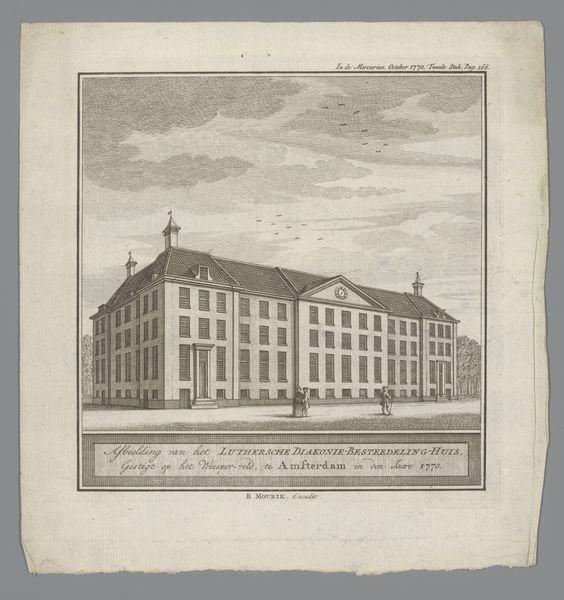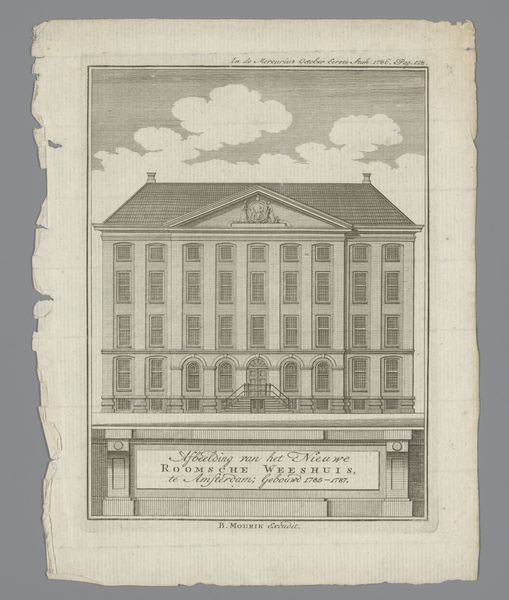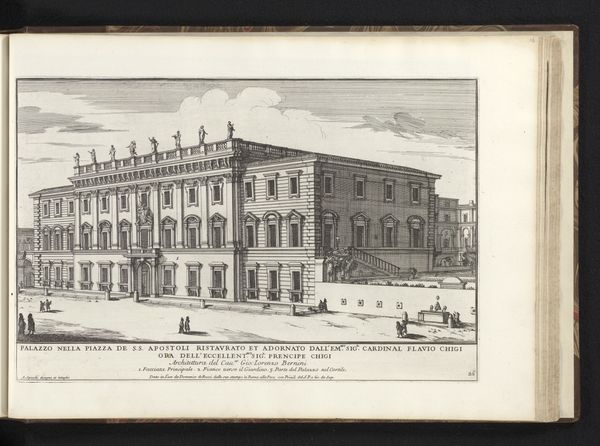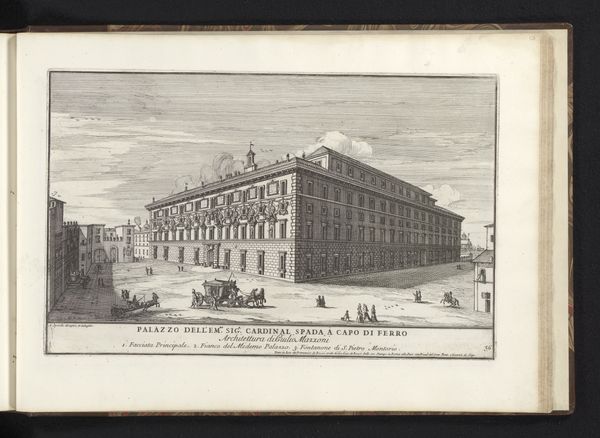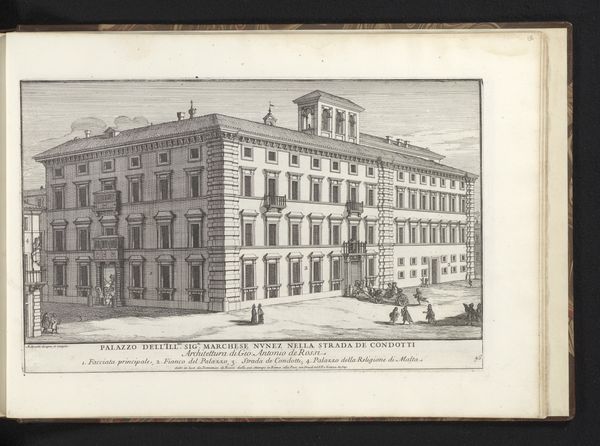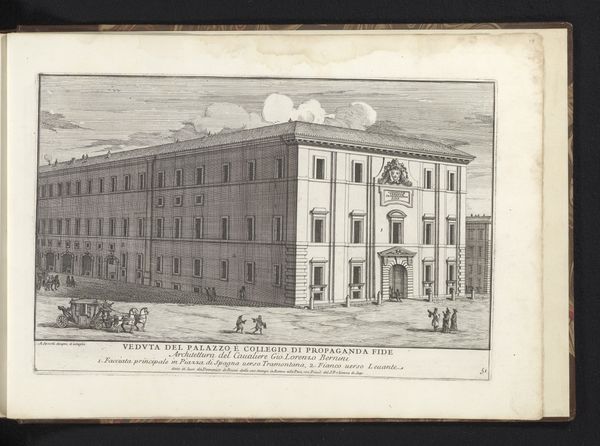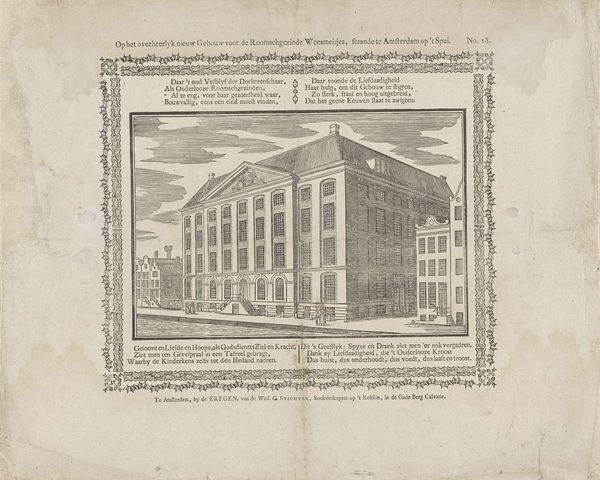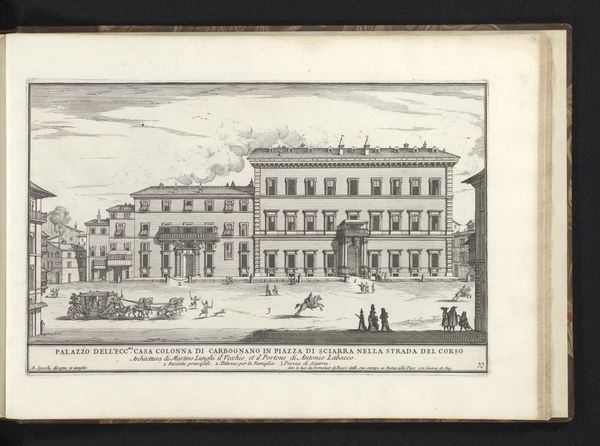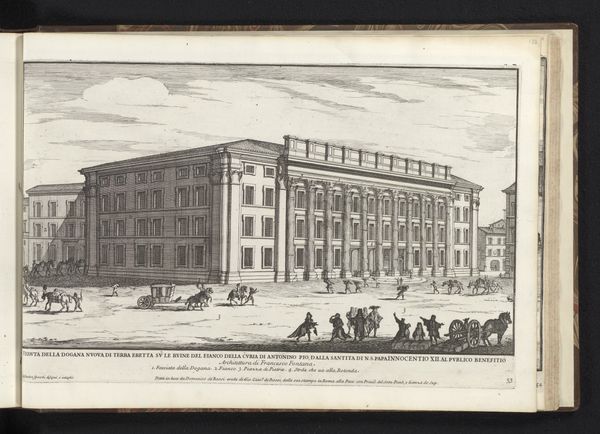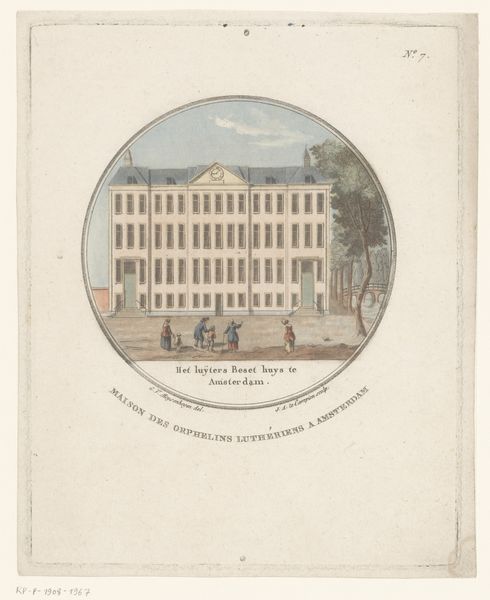
engraving, architecture
#
neoclacissism
#
cityscape
#
engraving
#
architecture
Dimensions: height 178 mm, width 135 mm
Copyright: Rijks Museum: Open Domain
Editor: This is "Gezicht op het Nieuwe Werkhuis te Amsterdam," an engraving from 1784 by an anonymous artist. The building seems massive, almost oppressive, yet rendered with this incredibly fine detail. What strikes you about the visual composition? Curator: What commands my attention is the stark geometrical arrangement of forms, reflecting the burgeoning Neoclassical aesthetic. The artist presents a study in contrasts: the crisp linear depiction of the Werkhuis itself, with its rhythmic arrangement of windows, set against the more organic forms of the clouds. Note the receding plane and how this provides the building scale against the sky, the inscription a bridge into this perspective. Editor: That’s interesting. I was focusing on the implied narrative – people walking, birds in the sky – to add to a sense of the city. But, isn't there a disconnect between that airy freedom above the architecture? Curator: Precisely! Observe how the rigid lines and symmetry of the building's architecture convey stability and order while simultaneously contrasting with the lively placement of the characters populating the scene below. Editor: So the appeal is about the careful ordering of forms, rather than, say, historical context. Curator: Historical context matters, but from a formalist lens, they become meaningful only insofar as they impact our aesthetic understanding of the artwork. How does our knowledge of, say, prison architecture inform our understanding of massing? The real key is the visual interplay of line, form, and space. Editor: I see what you mean! It's like understanding the emotional impact comes from this push and pull in the visual arrangement itself. Thanks for shifting my perspective on how to look at it! Curator: A rewarding analysis unfolds when form meets its context; and form informs function within this frame.
Comments
No comments
Be the first to comment and join the conversation on the ultimate creative platform.
